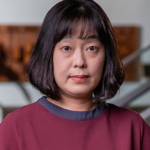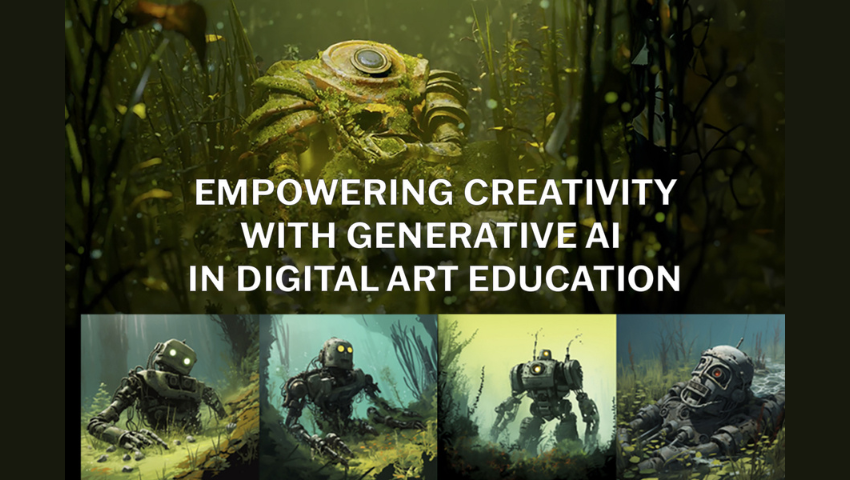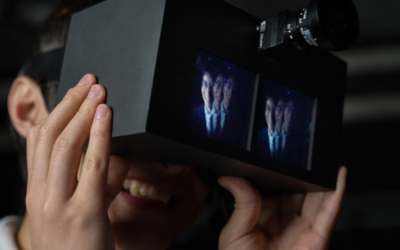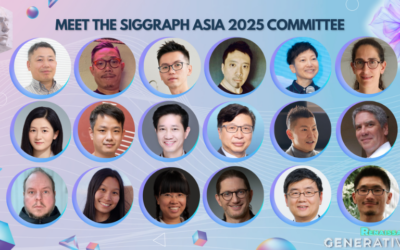Image Credit: Madison Schaeffer, Trace Block, Adrianne Ross, Toryn Autry, Lauren Waters, Madison Sutton, Hayden Hanna, Laura Rabb, Claire Thessen
Check out how this team of educators at Texas A&M University help students gain a robust understanding of Generative AI (GenAI) to better visualize and communicate their ideas. Discover what the future of AI can do for education with the SIGGRAPH 2024 Educator’s Forum session, “Empowering Creativity With Generative AI in Digital Art Education.”
SIGGRAPH: Share some background about your SIGGRAPH 2024 Educator’s Forum Talk “Empowering Creativity With Generative AI in Digital Art Education”. What inspired this focus?
Caleb Kicklighter (CL): Our undergraduate program has a 3D animation and games curriculum path, with classes that often have students creating group film and game projects in a studio environment.
As instructors, we saw Generative AI (GenAI) as an opportunity for our students to enhance how they visually communicate their ideas to us and to their peers: creating concept variations, mood board fodder, lighting examples, etc. It seemed like a great tool for ideating faster.
AI will also be there waiting for our students when they’ve left our program and enter the industry. We want our students to get familiar with the technology in a low-stakes learning environment and learn how to ethically engage with AI in their creative workflows.
SIGGRAPH: How does Generative AI contribute to greater creativity in the classroom? Without giving too much away from your conference session, what are some other benefits of Generative AI’s use in education?
CL: Previsualization is the process of visualizing the look of the final film or game before going through the long process of creating it. This is where key design and storytelling decisions are made, and the better we can visualize the look, the better informed our decisions are. GenAI can help students (especially those with developing drawing skills) quickly iterate on these ideas and see visual results almost immediately. When students are brainstorming together with their group, and they’re throwing ideas back and forth about what a short or environment might look like, GenAI can give them visualized examples that make their discussions richer and more targeted toward concrete visual goals.
As instructors, we also found GenAI useful for demonstrating to students’ visual concepts quickly, especially in response to student questions and feedback. It is even useful for showing students what doesn’t work or “look good”, what’s derivative or cliche. Ultimately, it’s the students’ design and storytelling sensibilities that make the film special, and GenAI can be just another tool in their toolbox!
SIGGRAPH: In your opinion, what is the next big trend in digital art education?
CL: Related to GenAI, we expect many digital art education programs to re-emphasize visual storytelling and spend less time on specific DCCs. With so much changing in the disciplines involved with film and game production, students will be expected to be digital generalists, and it will be important for them to think like an art director or cinematographer would.
We also expect that there will be more demands (and opportunities) to create curriculums that cater to individual student needs.
SIGGRAPH: What is one tip or piece of advice you share with educators who want to incorporate AI into their educational environment?
CL: We would recommend putting an emphasis on documentation in your syllabus and assignments incorporating AI. We ask our students to keep track of how AI was used in their projects and to present their findings at the end of the semester. We never want to punish our students for experimenting with these new tools, but instead encourage them to share their experience with the class, and to be transparent in how it was used in their work.
SIGGRAPH: What can SIGGRAPH 2024 participants expect when they attend “Empowering Creativity With Generative AI in Digital Art Education” during the conference?
CL: It will be a frank conversation about how a single semester went with a large (50+ students) studio class that used AI in their creative process. We’ll share how students approached the experiment, their preconceived notions regarding GenAI, and how they felt about GenAI by the end of the course.
We’ll share our practical opinions on the pros and cons of using AI in the classroom, and touch on topics like ethics and accountability.
Register for SIGGRAPH 2024 to gain access to this presentation and many more!

Caleb Kicklighter is an instructional assistant professor at Texas A&M University. He teaches courses in 3D animation, computer graphics, rendering techniques, and character art in the School of Performance, Visualization & Fine Arts. His current research interests are in changes to the workflows for linear storytelling projects, and he has worked on virtual-reality research projects associated with education in nursing.

Jinsil Hwaryoung Seo is an interactive artist and researcher, emphasizing the aesthetic aspects of user engagement. She holds an associate professorship in visualization at Texas A&M University, where she also contributes as a faculty fellow to the Institute for Applied Creativity and the Center for Health Systems & Design. Seo earned her Ph.D. from Simon Fraser University and an MFA from the School of Visual Arts. Her work explores the confluence of body, nature, and technology, focusing on human experiences and patterns within nature. Seo champions interactive art to cultivate immersive and tactile connections within art, fostering participant relationships.

Mayet Andreassen is both an artist and educator whose core philosophy centers on promoting artistic and creative excellence in her students and herself. Mayet has over 14 years of teaching experience at the college and university level, and is currently working as the associate program director of the B.S. in visualization and as a full-time instructional assistant professor at Texas A&M University in the School of Performance, Visualization & Fine Arts. Mayet has led and served on various committees and boards. Her previous work experience is in the games industry and as a freelance designer and illustrator.

Emily Bujnoch is an instructional assistant professor at Texas A&M’s new School of Performance, Visualization, & Fine Arts. Her specializations include creature sculpting and technical direction (rigging, fur simulation, etc.) as well as over two years of animation production management. In her spare time, she often dabbles with mixing digital and physical sculpture mediums with rogue taxidermy.



